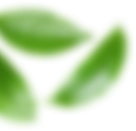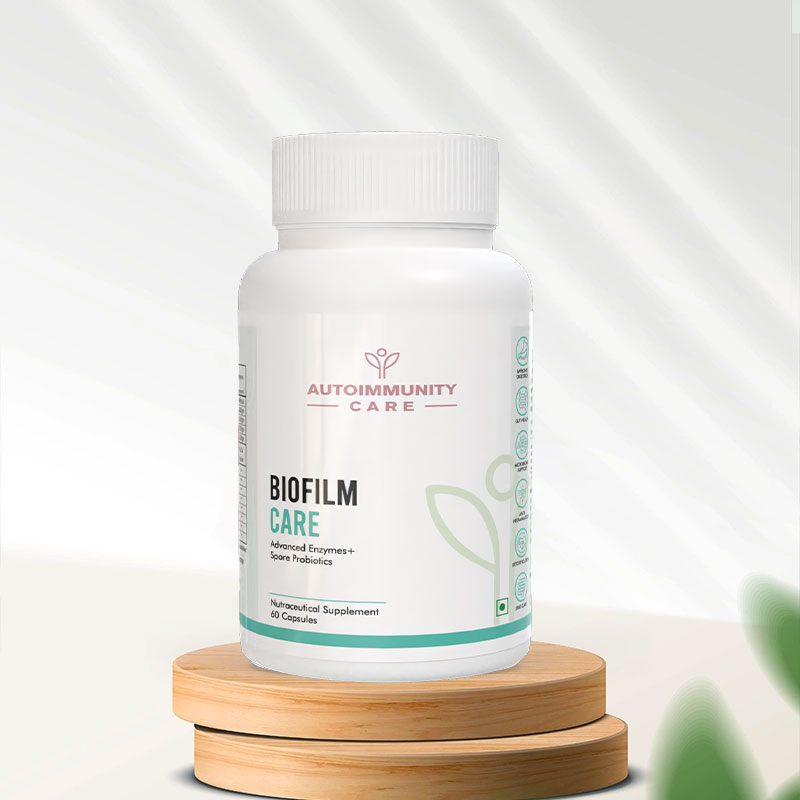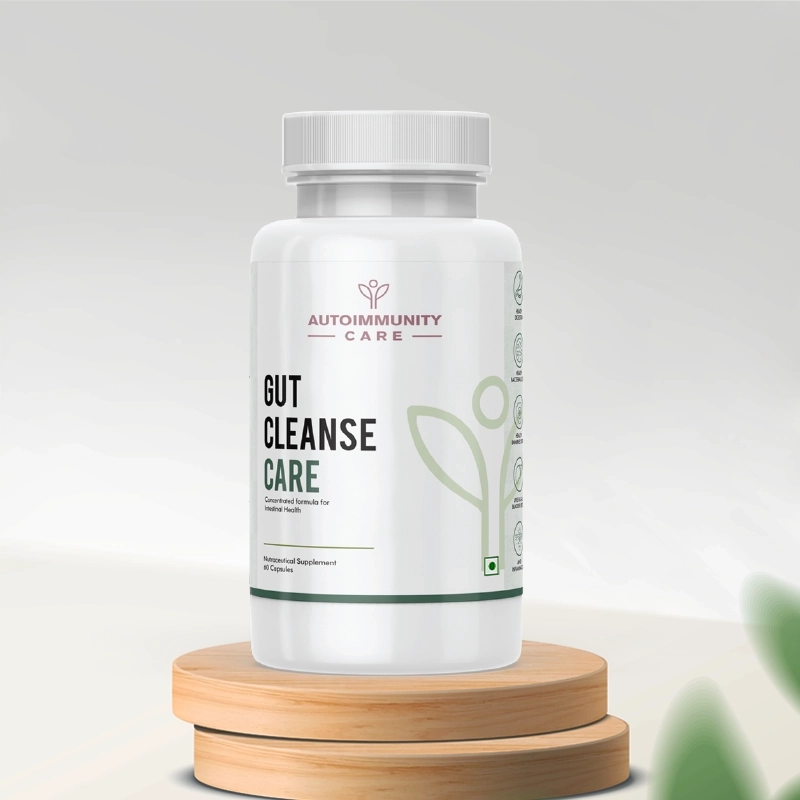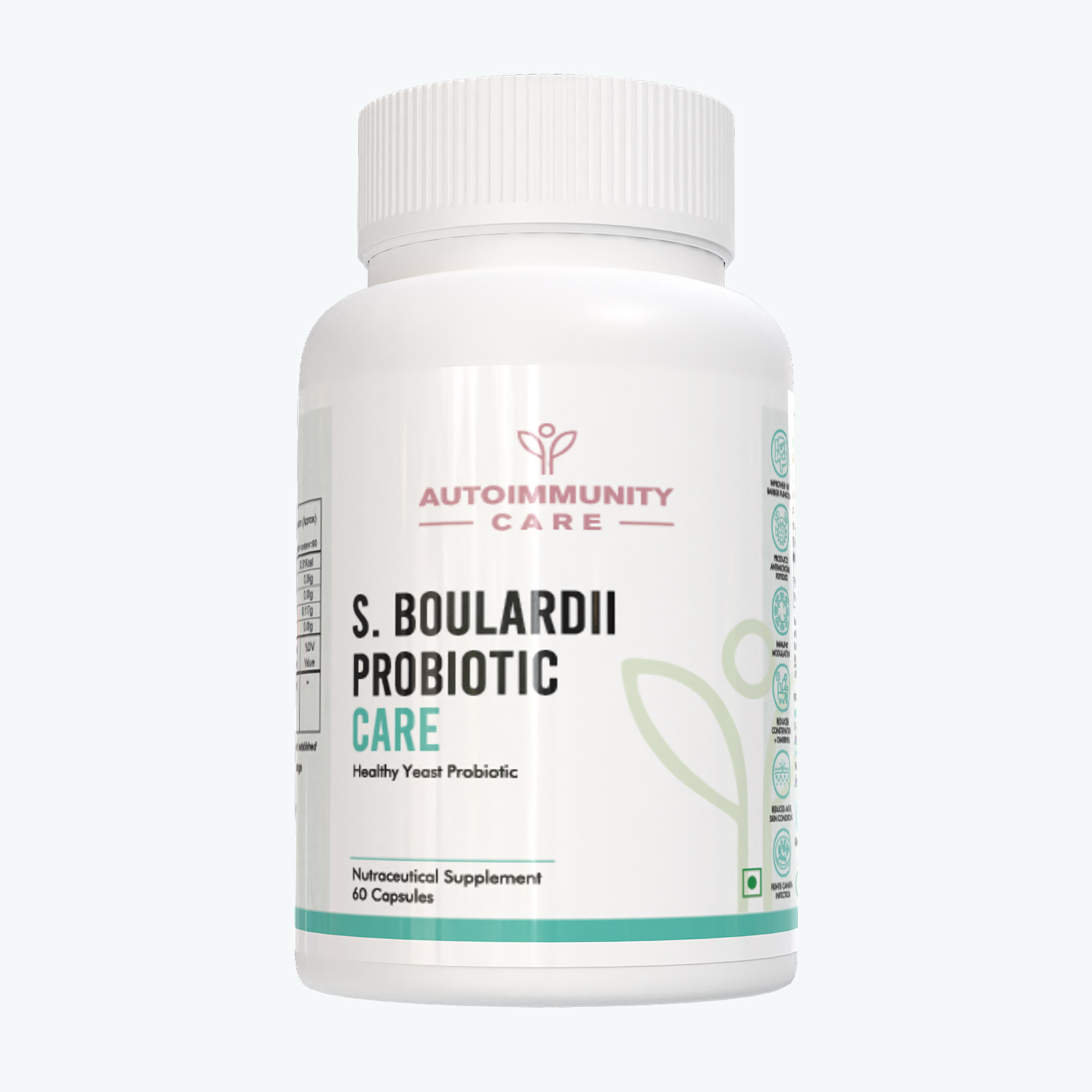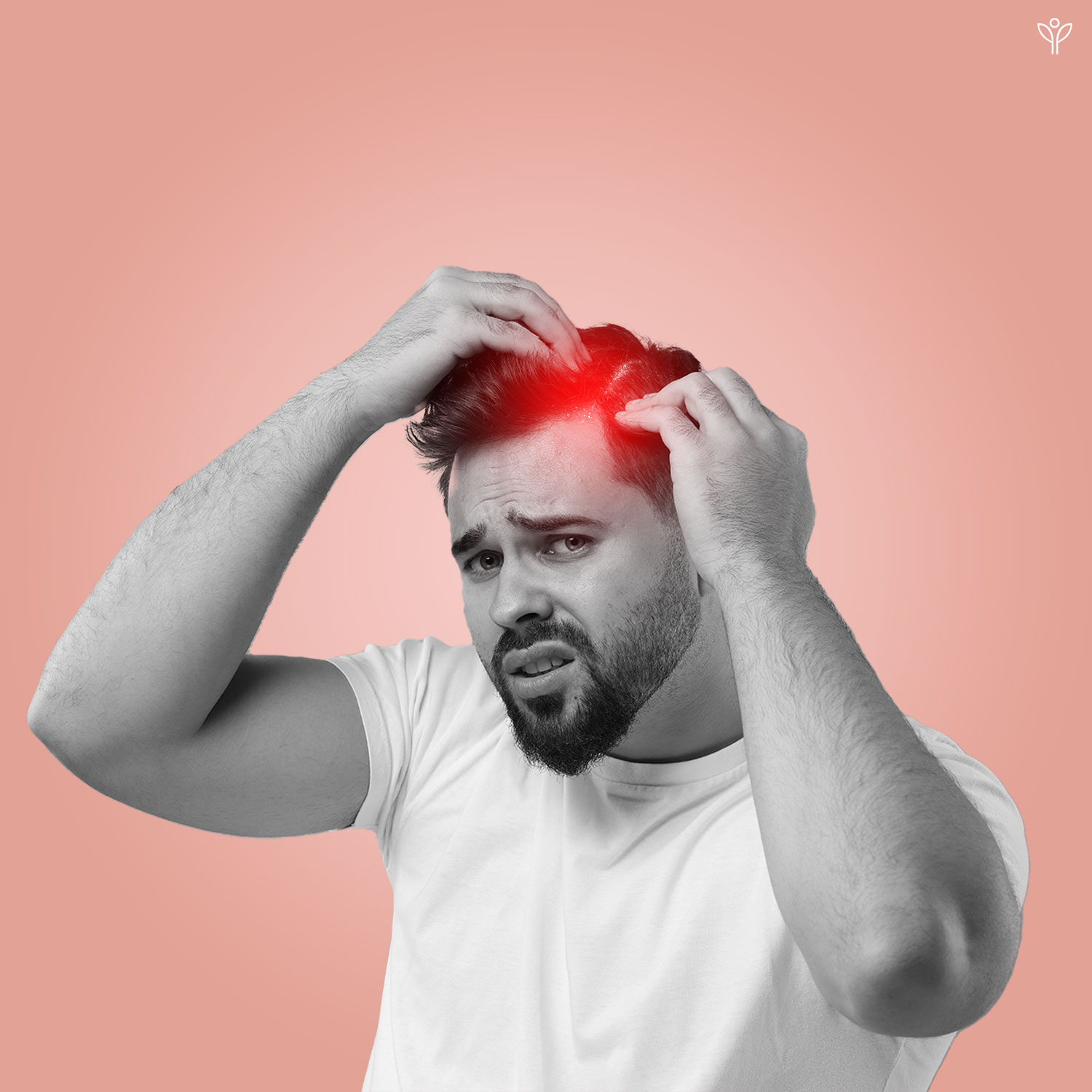
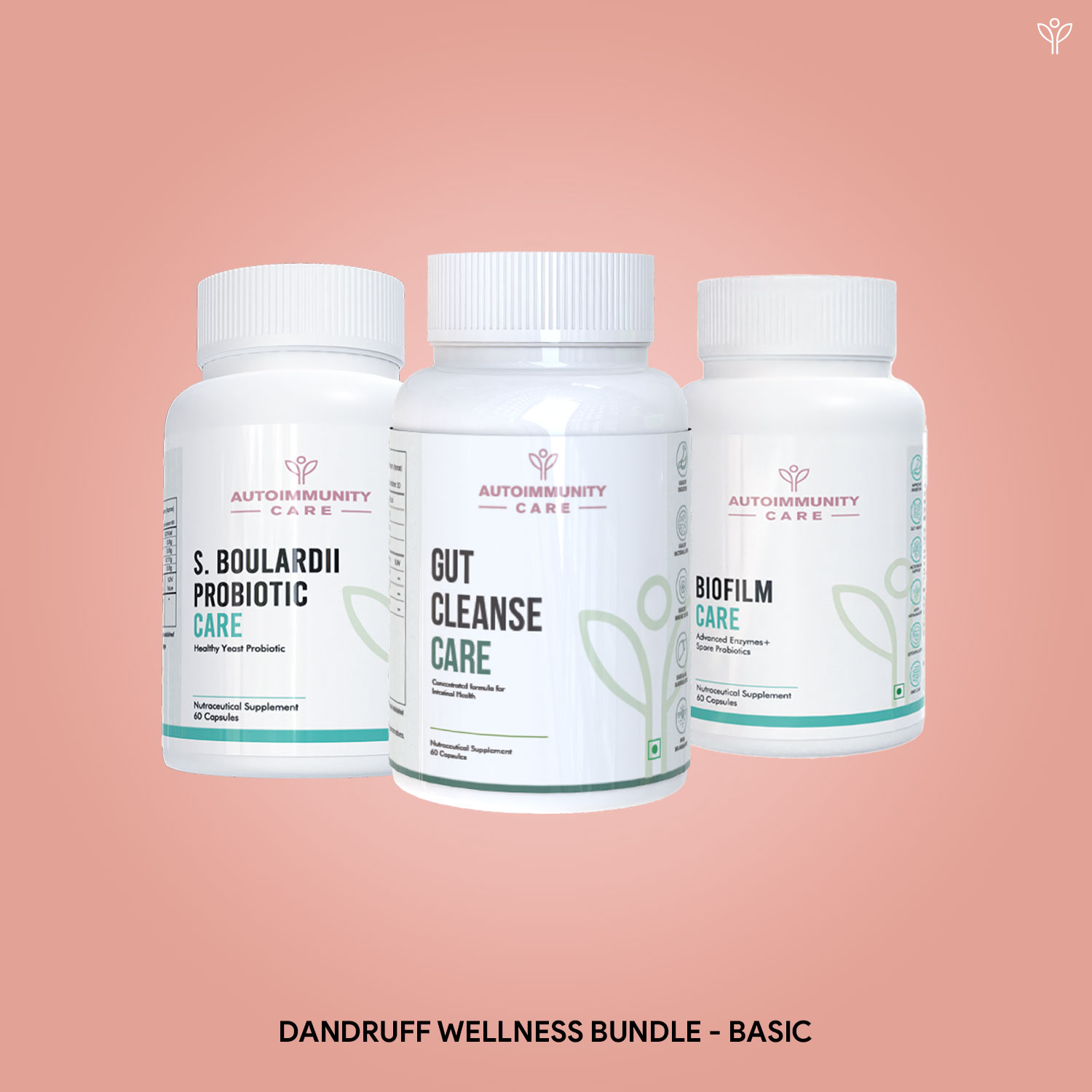
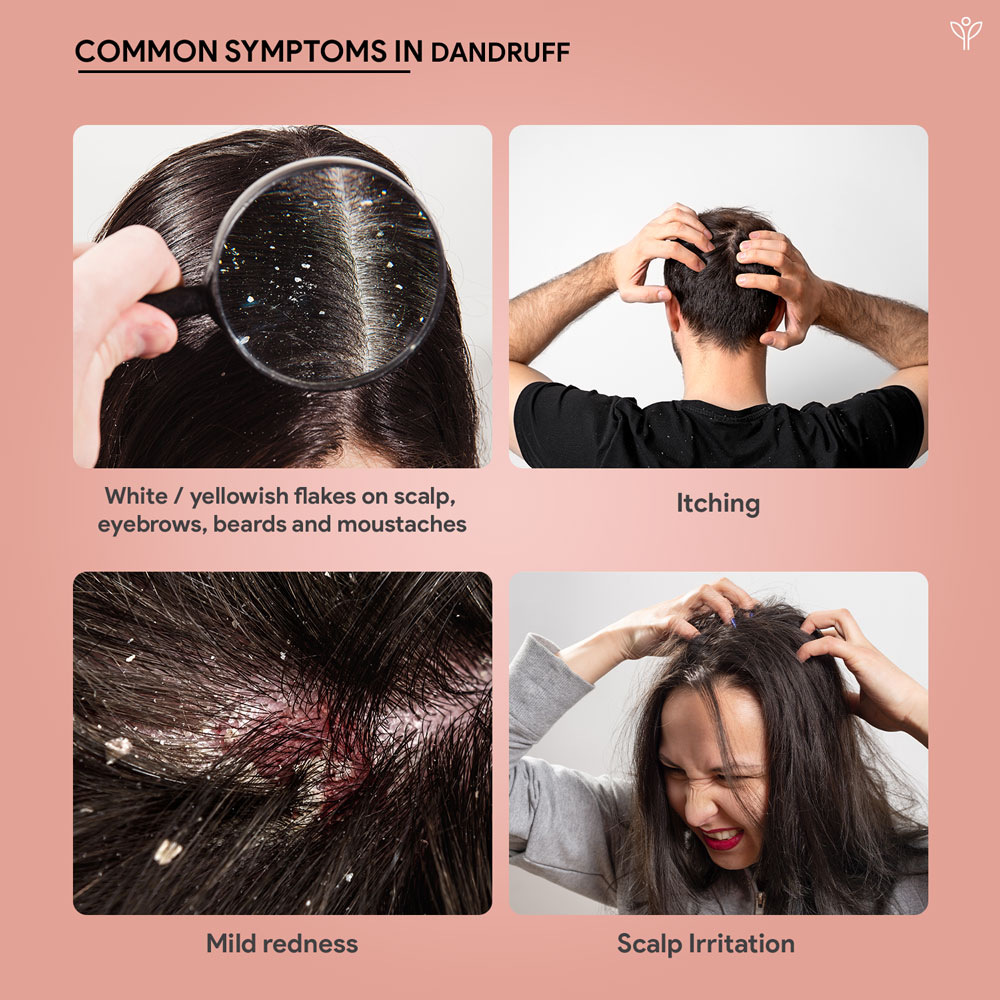

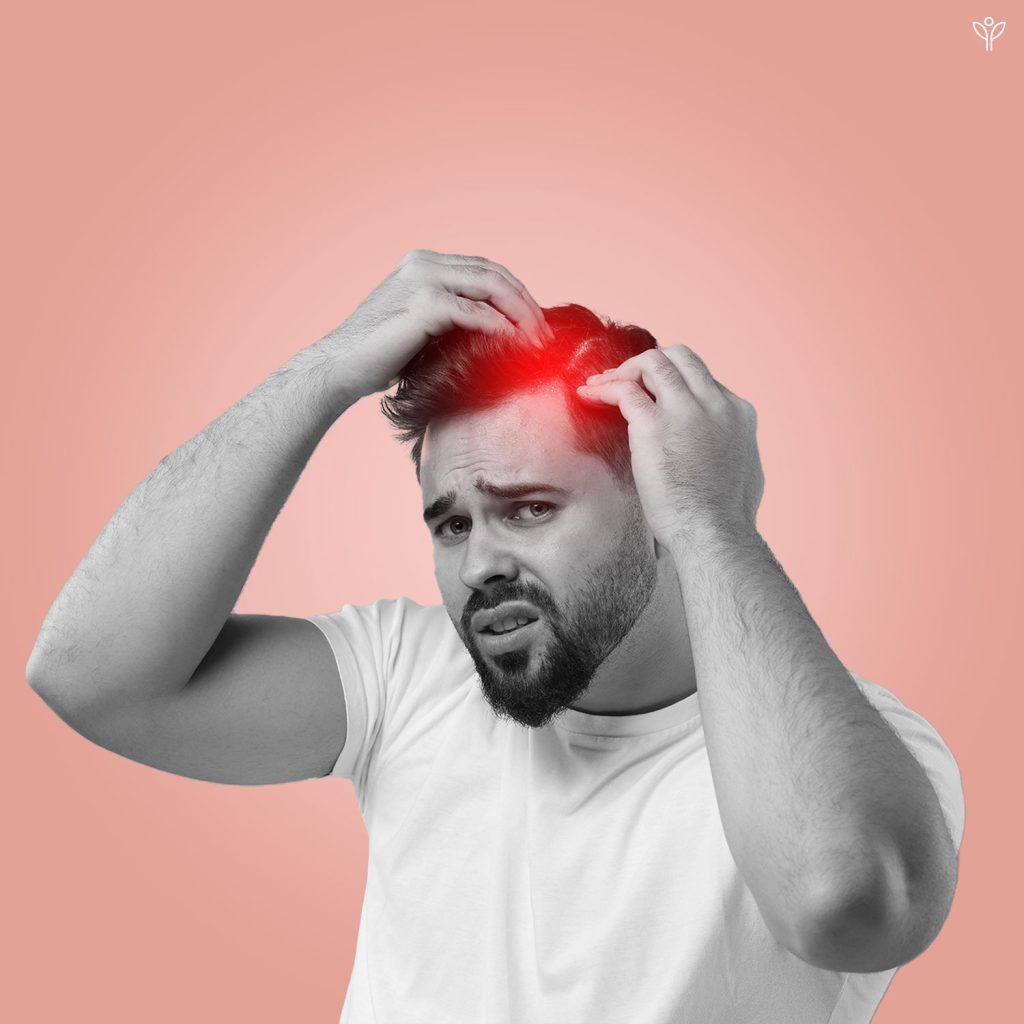
Dandruff
With AIC’s Dandruff bundle, get to the root of dandruff and say goodbye to dandruff. This holistic solution addresses detoxification, gut health, biofilm disruption, and immune system support. By targeting the root causes of dandruff, our bundle promotes a healthy scalp and flake-free life. Get ready to transform your scalp health.
Understanding Dandruff
Dandruff is a scalp condition characterized by the presence of white or yellowish flaky scales and itch on the scalp. It is due to the excessive shedding of dead skin cells from the scalp, often accompanied by mild itchiness.
Dandruff is a very common condition that is estimated to affect up to 50% of the adult population globally. (Borda & Wikramanayake, 2015) It is more prevalent in males and often starts in the teenage years or early adulthood (Borda & Wikramanayake, 2015). Dandruff is different from seborrheic dermatitis, which involves visible inflammation and redness in addition to the flaking skin.

What we have in Dandruff
Reference
Borda, L. J., & Wikramanayake, T. C. (2015). Seborrheic Dermatitis and Dandruff: A Comprehensive Review [Review of Seborrheic Dermatitis and Dandruff: A Comprehensive Review]. Journal of Clinical and Investigative Dermatology, 3(2). https://doi.org/10.13188/2373-1044.1000019
Park, H. K., Ha, M.-H., Park, S.-G., Kim, M. N., Kim, B. J., & Kim, W. (2012). Characterization of the Fungal Microbiota (Mycobiome) in Healthy and Dandruff-Afflicted Human Scalps. In PLoS ONE (Vol. 7, Issue 2). Public Library of Science. https://doi.org/10.1371/journal.pone.0032847
Narshana, M., & Ravikumar, P. (2018). An overview of dandruff and novel formulations as a treatment strategy. International Journal of Pharmaceutical Sciences and Research, 9(2), 417-431. https://doi.org/10.13040/IJPSR.0975-8232.9(2).417-31
Ranganathan, S., & Mukhopadhyay, T. (2010). Dandruff: The most commercially exploited skin disease. In Indian Journal of Dermatology (Vol. 55, Issue 2, p. 130). Medknow. https://doi.org/10.4103/0019-5154.62734
Rupa Health. (n.d.). Flakes no more: A functional medicine approach to diagnosing and treating dandruff. Rupa Health. https://www.rupahealth.com/post/flakes-no-more-a-functional-medicine-approach-to-diagnosing-and-treating-dandruff

